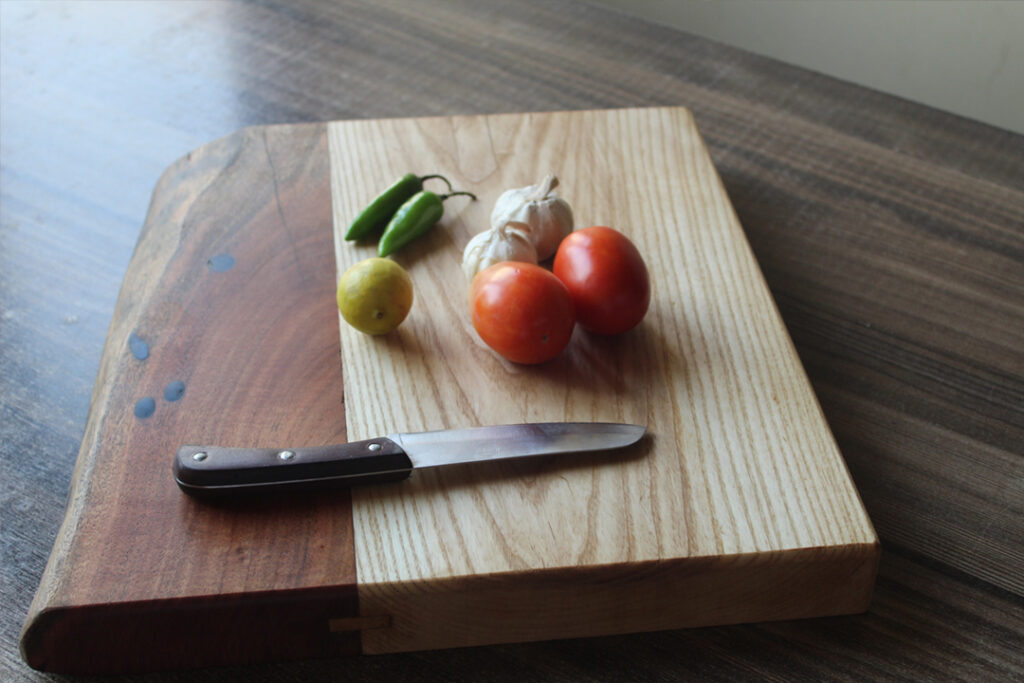
Is Ash Good for Cutting Boards?
Cutting boards are essential tools in any kitchen, serving as the unsung heroes of meal preparation. For many, the choice of material for a cutting board is crucial, balancing functionality with aesthetics. As a wood enthusiast or a home cook, you may be intrigued by the potential of ash wood for your cutting board project. In this in-depth analysis, we will explore the suitability of ash wood for cutting boards, providing insights into its properties, benefits, considerations, and care tips, to help you make an informed decision.
The Versatility of Ash: A Natural Fit for Your Kitchen Creations
Ash wood is renowned for its strength and versatile applications, from baseball bats to high-quality furniture. Home to over 60 species, this deciduous tree is a staple in woodworking due to its desirable characteristics. When it comes to the kitchen, choosing the right wood for a cutting board is as important as selecting the freshest ingredients for a recipe, and ash brings a blend of functionality and charm to the table.
Properties of Ash Wood that Carve Its Niche
Ash wood is celebrated for its balance of hardness and flexibility, making it a preferred choice for cutting boards that withstand the test of time. The inherent tight grain structure offers exceptional resistance to wear and tear, while also providing a beautiful canvas for woodworking projects.
A Home Cook’s Companion: The Reason Ash Wood Stands Out
Crafting a cutting board from ash wood introduces a variety of benefits that elevate your culinary experience. From its natural antimicrobial properties to ease of maintenance, ash wood can be your companion in the kitchen for years to come.
Understanding the Benefits of Ash Cutting Boards
An ash wood cutting board can be more than just a work surface – it can also be a statement of craftsmanship and thoughtful design. Let’s delve into the specific advantages that ash brings to the kitchen and the table.
Natural Antimicrobial Properties for a Healthier Kitchen
Ash wood is naturally resistant to bacteria, odors, and moisture, making it an excellent choice for a sterile food preparation surface. Its antimicrobial properties ensure that your cutting board remains a hygienic haven for slicing and dicing.
A Sturdy Option: Ash’s Resistance to Warping and Cracking
Ash wood boasts impressive dimensional stability, reducing the likelihood of warping or cracking over time. This reliability means your cutting board will maintain a flat surface, ensuring a consistent and safe cutting experience.
Low Maintenance, High Durability
With proper upkeep, an ash cutting board can last a lifetime. Its dense grain structure requires minimal maintenance, needing only regular oiling to preserve its quality and extend its life.
Should You Choose Ash for Your Cutting Board?
As with any material, there are several factors to consider when choosing ash for your cutting board project. Here, we break down some critical points to help you decide whether ash wood aligns with your culinary and craftsmanship needs.
Availability and Cost: A Pragmatic Perspective
Ash wood is generally more accessible and affordable than some exotic hardwoods, making it an attractive option for those looking to balance quality with cost. Its relative abundance ensures a consistent supply for your woodworking ventures.
Aesthetics: The Beauty of the Grain
The unique grain pattern of ash wood can add a touch of natural elegance to your kitchen. Whether you prefer a classic, rustic look or a modern aesthetic, the warm undertones and prominent grain of ash can enhance the visual appeal of your space.
Sustainability: A Woodworker’s Responsibility
In an era where environmental consciousness is paramount, the sustainability of your cutting board material is a significant consideration. Ash wood, if sourced responsibly from well-managed forests, can be an eco-friendly choice for the ethically-minded woodworker.
The Ash Cutting Board in Comparison
How does ash wood stack up against other popular cutting board materials like maple, walnut, and bamboo? In this section, we conduct a side-by-side analysis to help you understand the unique selling points of each material.
Ash vs. Maple: A Battle of Durability and Style
Both ash and maple are known for their durability, but each offers a distinct grain pattern and color profile. While maple is lighter, ash’s more pronounced grain can make for a visually striking cutting board.
Walnut: The Dark Horse of Cutting Boards
Walnut, with its deep hues and fine grain, is a luxury wood often chosen for its rich look. However, ash presents a more budget-friendly option without compromising on strength or visual appeal.
Bamboo: The Sustainable Choice
Renowned for its sustainability and eco-friendliness, bamboo stands out as a durable and renewable alternative to traditional hardwoods. Despite these benefits, ash wood’s natural antimicrobial properties may tip the scales for health-conscious consumers.
Choosing and Caring for Your Ash Cutting Board
Selecting and maintaining an ash cutting board requires attention to detail and a few best practices. Ensure that your board serves you well by following these guidelines for care and upkeep.
Selecting the Perfect Ash Cutting Board
When choosing an ash cutting board, consider size, thickness, and quality. Opt for a board that suits your culinary needs, is adequately thick to prevent warping, and is crafted from high-quality ash wood.
Preserving the Quality Through Care
Maintain the natural beauty and functionality of your ash cutting board by regularly oiling and cleaning it. Simple care routines will extend its life and keep it looking as good as new.
In Conclusion: The Case for Ash Cutting Boards
An ash wood cutting board can be a durable and hygienic addition to your kitchen. Its enticing blend of strength, beauty, and ease of care makes it a compelling choice for home cooks seeking a reliable and elegant workhorse in their culinary space. Weighing the benefits against other materials, ash wood emerges as a formidable contender in the realm of cutting board construction.
As you venture into the world of woodworking and cooking, the decision to use ash should align with your values, aesthetic preferences, and the needs of your kitchen. While the debate over the perfect cutting board material may continue, the properties and potential of ash wood make it a worthy candidate for your future projects. With the right tools and a touch of creativity, an ash cutting board could be the centerpiece of your next gastronomic masterpiece. Whether you carve, serve, or savor, let ash wood be a part of your culinary journey.
